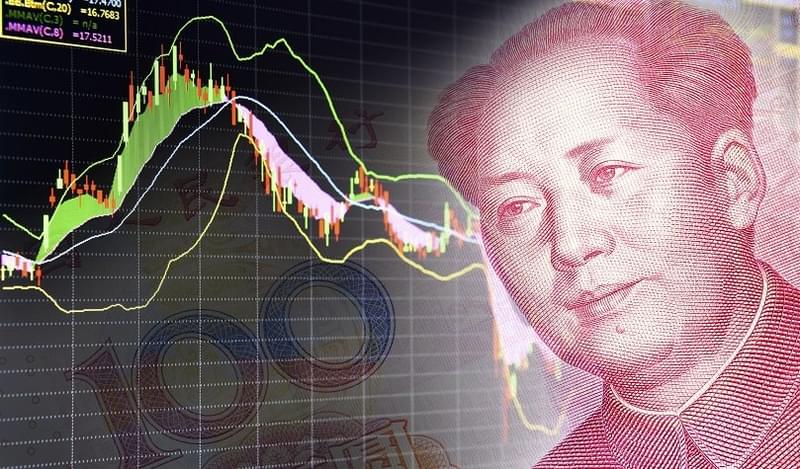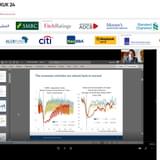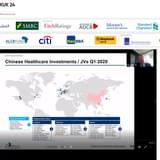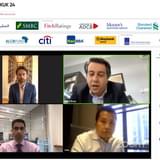The Chinese government has continued with its efforts to stem huge capital exodus and continued devaluation of the yuan, introducing a range of measures that many analysts believe to be insufficient.
The yuan dropped nearly 7% against the dollar in 2016, almost twice as much as the year before. The offshore renminbi bounced back on Wednesday, hitting 6.89 against USD, a 1.09% gain – biggest one-day jump in a year.
But the local currency’s recent slump has seen spiralling capital flight, with US$69.2bn leaving the country in November, continuing the trend of recent months. While official PBoC figures claim that since June, nearly US$540bn left the country, many analysts remain sceptical, suggesting that figure could be twice as large.
Based on the analysis of PBoC FX transactions, a team of analysts at Goldman Sachs estimated that as much as US$1.1bn of the bank’s FX holdings was sold-off to support the yuan between August 2015 and November 2016, with US$300bn expended in just the last quarter of 2016.
Dollar-debt has also continued to surge, with corporate borrowings growing by US$47.7bn in the third quarter, reaching US$1.2tn. According to the WSJ, local banks accounted for around 38% of that figure.
This rise in foreign debt is, in turn, pushing outflows further up: as firms draw most of their revenues from domestic business, a weaker currency means they are required to expend more yuan to serve this debt, thus impacting profits and forcing early pay-outs.
While China’s whopping US$3bn reserves provide a buffer for its economy and there does not appear to be any immediate threats to stability, Beijing’s actions to curb capital flows appear to suggest that concerns are growing about a snowball effect and even possible panic sell-offs.
Damage control
Firstly, the PBoC tightened regulations on currency transfers, namely “large or suspicious” transactions, in the last week of 2016. New measures include demand for banks to report any cross-border remittances over US$10k, stricter disclosure and compliance rules, watch lists (and penalties) for violators and stronger enforcement of these and other guidelines.
“As Chinese citizens now make 120 million trips abroad a year, better documentation and data collections are justified, but these measures effectively throw sands in the wheels of capital outflows,” concluded authors of an IIF report.
Another measure, however, appears to be more effective. The PBoC on December 29 announced it was expanding and broadening the composition of the CFETS currency basket, adding 11 new currencies to make the total of 24. Those additions will account for 21.1% of the new basket, meaning that the relative weight of the USD will drop from 264% to 22.4%.
Jan Dehn, Head of Research at Ashmore Investment Management Ltd, believes that China is addressing the capital flight in a number of ways - by continuing on the path of reforms, which is the right thing to do, and diversifying the basket.
“They are diversifying away from a pure dollar peg to a basket of currencies, and working hard to achieve inclusion in benchmark indices,” said the analyst. “And China has a good case for not pegging its currency to the dollar, I think. IMF considers the USD at least 20% overvalued, with large US current account deficit and relatively slow growth.”
According to the expert, pegging the currency to the dollar is no longer a viable option for China, because Chinese and US economies are going through completely different macroeconomic phases.
“The US economy is recovering from the deepest crisis since the 1930s and has been supported by a massive fiscal stimulus, rate cuts and enormous QE. It is on a recovery path, which is attractive to investors, which in turn is pushing up the dollar. But for China, it is a transition from an export led economy, to becoming a domestic demand led economy.”
Challenges ahead
Looking at the long-term picture, the expert sees China facing a number of challenges in its bid to transition from a supply-led to a demand driven economy.
The first is liberalising interest rates, which have been maintained at artificially low levels to stimulate investment. As rates are floated and rise, it will have to regulate consumption, with the PBoC driving rates at the short end and the bond markets - along the yield curve. The uncertainty associated with that raises the rate of defaults, creating uncertainty and exacerbating capital flight.
This leads to the second challenge, which is staving off economic imbalance associated with surging consumption.
“China has a savings rate of 49% - highest in the world. If this were to go into spending, we would see a huge pickup in domestic demand that would be inflationary and create current account deficit,” Dehn noted.
In order to boost aggregate supply, the government needs to raise productivity, which entails a range of reforms – such as making state-owned enterprises more efficient, introduce and enforce new regulations in the private sector and liberalising prices to ensure more efficient allocation of resources.
Finally, and most importantly, as the country gradually turns from a net exporter to a net importer, the current account deficit will grow – and needs to be financed through the capital account.
“For an EM economy like China, it is treated very differently in the capital markets, compared to DMs. Any rise in risk leads to an EM asset sell-off,” he continued. “In order to liberalise capital accounts, China is subjecting itself to a huge amount of destabilising capital outflows, which is worrying.”
EM curse
According to the analyst, in order to break this “EM curse”, China needs a DM currency, which is why the authorities have pursued inclusion in the SDR, Dehn stated.
“But being part of the SDR in itself is not enough, if investors worldwide don’t hold their currency. That will not happen until it becomes part of the benchmark for equities and fixed income.”
In the current period of major reforms and huge uncertainty investors will look to diversify their portfolios, but if they don’t have access to bonds, they will be forced to seek foreign assets.
“That is the fundamental cause of this capital exodus. You end up with a much more volatile equity market, in the absence of a functioning debt market,” he concluded.
Developing this market is therefore the utmost priority for China if it is to become the global leader that it aspires to be. It also has the necessary conditions in place for such a market to emerge.
“China is already a US$3tn market – it’s one of the biggest bond markets in the world, but foreigners hold next to zero of those bonds. I think that displays a degree of myopia – it is insane that the market is treating China like a leper,” mused the expert.
Observers highlight a whole range of reasons for this lack of foreign interest in Chinese debt – from lack of knowledge and understanding of local markets, to concerns about the economic slowdown (or a possible hard landing that it has been tipped for over the last decade), freedom of capital movement and political instability.
And, paradoxically, while the current downturn is largely driven by the shift in its economic model, a possible reversal of that process would have an even more damaging effect.
“If China were to revert to their old growth model, repressing interest rates, forcing investment and higher exports etc, the consequences would be extremely severe. That model has no future for them, because the primary driver of that model – huge growth in demand worldwide – is on the decline.”
But as there is little to suggest that such a U-turn would occur, for now the government’s best bet would be to continue on its path of establishing a strong bond market and using soft pressure to increase its role in international markets and benchmark indices.
The bulk of the 49% of deposits in Chinese banking system has gone towards developing infrastructure, financing projects of monumental ambition and scope.
“China is in the process of creating the second-largest municipal bond market in the world,” Dehn surmised. “The muni-bonds from infrastructure projects are at the moment untradeable loans that local governments have taken from banks for infrastructure financing. They are now being converted into tradeable fixed-income securities. These bonds enter into a mutual fund system to which savers can get access, finally getting exposure to fixed income instruments that they were missing.”
If China can manage this currency devaluation and capital flight crisis, and go on to open up its bond market to foreign investors, it could finally complete its transition to the new model.
“China, with its long-term approach to reforms, could be an extremely useful alternative to the stagnant Western markets and potentially could become a demand engine for the entire global economy – if it was allowed in,” the analyst concluded.









